Are you fantasizing about owning a small house but unsure about how to finance it? Look no further, as we have a detailed guide on the 7 crucial factors to keep in mind when financing a tiny house.
Together, we will delve into understanding your budget, exploring loan options, researching financing programs, considering alternative funding sources, evaluating insurance options, examining building and zoning regulations, and planning for future expenses.
Let’s dive in and make your tiny house dreams a reality!
Key Takeaways
- Conduct a thorough analysis of your income, expenses, and existing debt obligations to determine your budget for financing a tiny house.
- Research and compare financing programs offered by different lenders, considering loan terms, down payment requirements, and additional fees and charges.
- Explore alternative funding sources such as personal loans, crowdfunding, creative fundraising strategies, and partnerships and grants.
- Familiarize yourself with building and zoning regulations, consult with local authorities, and research permits and licenses required for construction of a tiny house.
Understanding Your Budget
We need to carefully assess our budget when considering financing for a tiny house. Budget planning is a crucial aspect that requires thorough analysis and attention to detail. It involves assessing our financial resources and determining how much we can afford to spend on our tiny house.
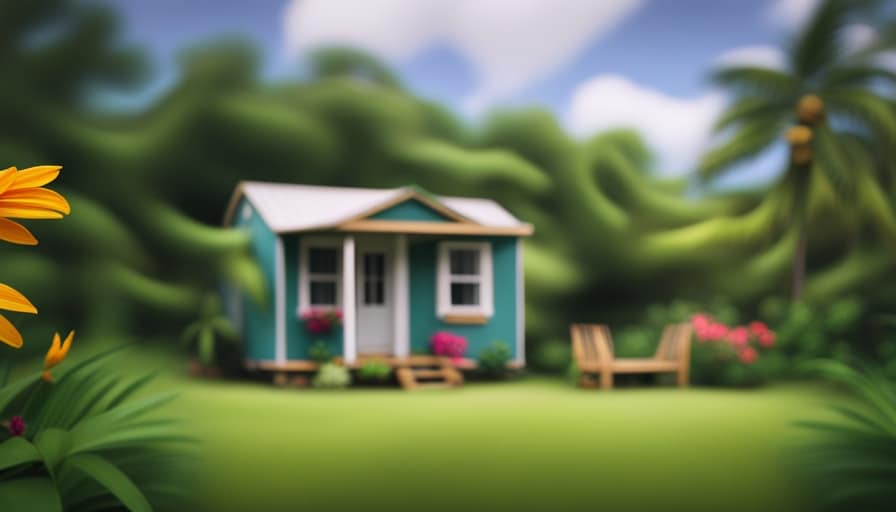
An affordability assessment is essential to ensure that we don’t overextend ourselves financially. This process involves evaluating our income, expenses, and existing debt obligations. By considering these factors, we can determine a realistic budget for our tiny house project.
It’s important to be realistic and conservative in our budget planning to avoid any financial strain or difficulties in the future. Taking the time to carefully assess our budget will help us make informed decisions and ensure the long-term financial well-being of our tiny house venture.
Exploring Loan Options
When exploring loan options for financing a tiny house, it’s crucial to consider the loan eligibility criteria and compare interest rates.
We need to carefully evaluate the eligibility requirements set by different lenders to ensure that we meet their criteria.
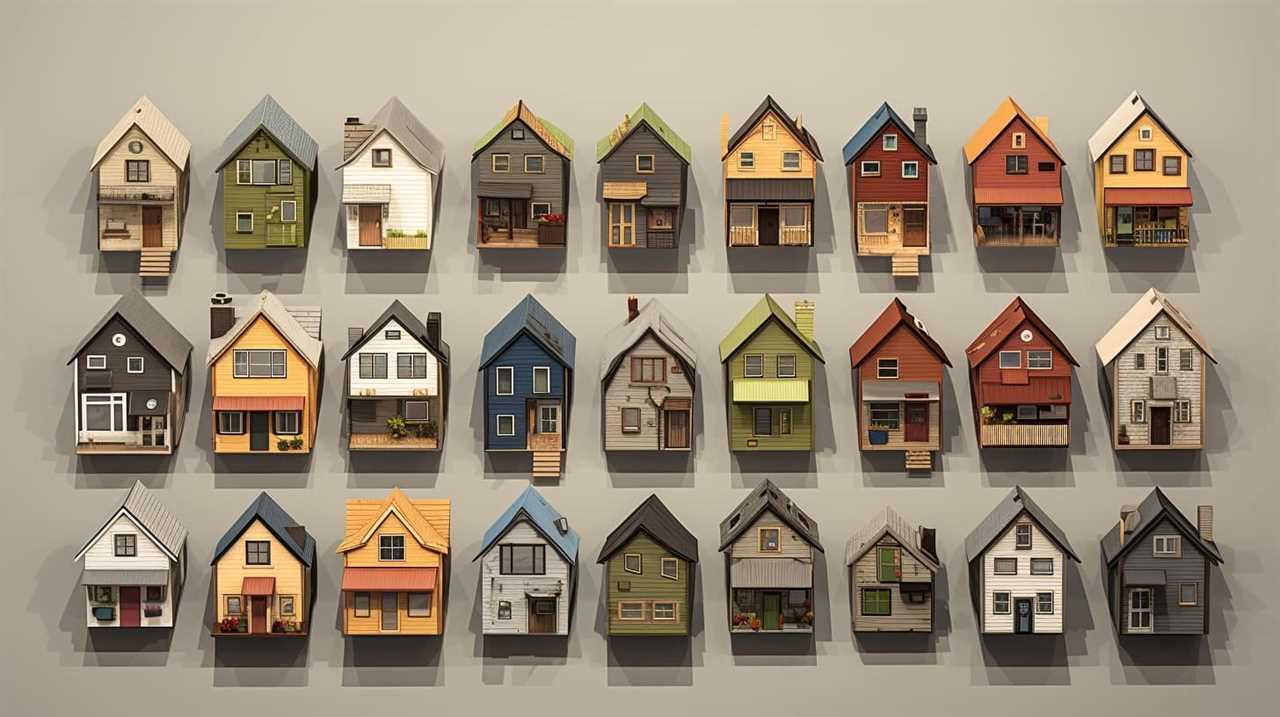
Additionally, comparing interest rates among various loan options will help us choose the most affordable and suitable financing option for our tiny house project.
Loan Eligibility Criteria
We’ll need to review the eligibility criteria for loans in order to explore our options for financing a tiny house. When considering loan options, it’s important to understand the income requirements and credit score needed to qualify. Here are some key aspects to consider:
-
Income Requirements: Lenders typically require borrowers to have a stable source of income to ensure they can make timely loan repayments. This may include employment income, self-employment income, or rental income.
-
Credit Score: A good credit score is crucial for loan approval. Lenders assess your creditworthiness based on your credit history, including factors like payment history, outstanding debts, and length of credit history.

-
Debt-to-Income Ratio: Lenders also consider your debt-to-income ratio, which compares your monthly debt obligations to your monthly income. A lower ratio indicates a better ability to repay the loan.
-
Down Payment: Some lenders may require a down payment for a tiny house loan. Saving for a down payment shows financial responsibility and reduces the loan amount, making it easier to obtain financing.
Interest Rates Comparison
As we delve into exploring loan options for financing our tiny house, we need to compare the interest rates offered by different lenders. This step is crucial in determining the overall cost of our loan and the potential long-term savings we can achieve.
By comparing interest rates, we can identify the most favorable options for refinancing our tiny house in the future, should the need arise. It’s important to consider both fixed and variable interest rates, as well as any additional fees or charges associated with the loan.

Researching Financing Programs
We often find it helpful to research financing programs when considering options for tiny house financing. This allows us to explore the various lenders and loan terms available, ensuring that we make an informed decision.
Here are some key aspects to consider when researching financing programs:
-
Lender Reputation: It’s essential to research lenders and their reputation in the industry. Look for lenders with experience in financing tiny houses and positive customer reviews.
-
Loan Terms Comparison: Compare loan terms offered by different lenders, including interest rates, loan duration, and repayment options. This will help you find the most favorable terms for your financial situation.

-
Down Payment Requirements: Look into the down payment requirements of different financing programs. Consider your budget and determine which program offers a down payment that works best for you.
-
Additional Fees and Charges: Research any additional fees or charges associated with the financing program. These may include origination fees, closing costs, or prepayment penalties. Understanding these costs will help you make an accurate comparison between different financing options.
Considering Alternative Funding Sources
When exploring alternative funding sources for tiny house financing, it’s important to consider non-traditional loan options. These can include personal loans from online lenders or peer-to-peer lending platforms.
Additionally, crowdfunding has emerged as a viable option for raising funds for tiny house projects, allowing individuals to tap into a larger community for support.

Lastly, creative fundraising strategies such as hosting events, selling merchandise, or starting a small business can also provide additional funds for building a tiny house.
Non-Traditional Loan Options
Let’s explore some alternative funding sources for non-traditional loan options when considering financing for a tiny house. When traditional lenders can’t meet your financing needs, there are unconventional lenders that may be willing to help. Here are some options to consider:
-
Peer-to-peer lending platforms: These platforms connect individuals who need loans with potential lenders, providing an alternative to traditional banks. They offer competitive interest rates and flexible repayment terms.
-
Microfinance institutions: These organizations specialize in providing small loans to individuals who may not qualify for traditional financing. They often prioritize social impact and may offer lower interest rates and longer repayment periods.
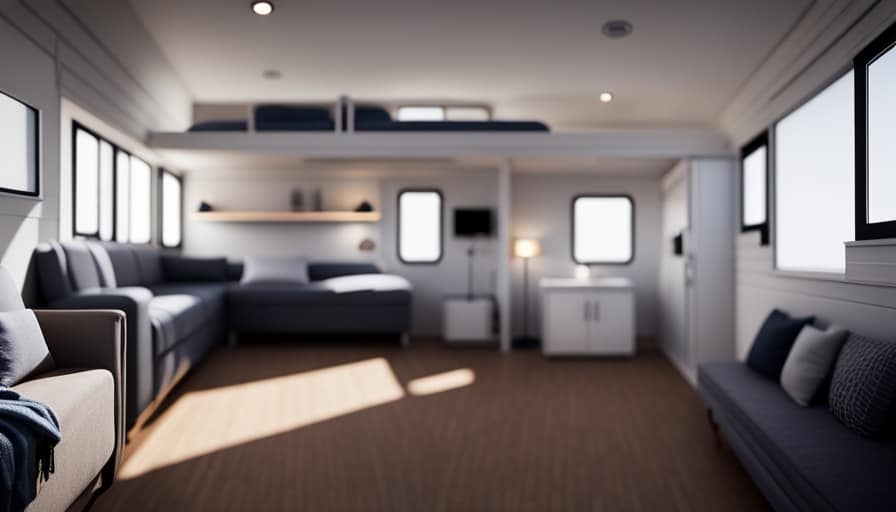
-
Community development financial institutions (CDFIs): These institutions focus on providing financial services to underserved communities. They offer loans specifically tailored to the needs of low-income individuals and small businesses.
-
Online lending platforms: These platforms offer a streamlined application process and quick funding. They cater to borrowers with less-than-perfect credit scores and may offer higher interest rates but greater accessibility.
Considering these non-traditional financing options can broaden your possibilities for funding your tiny house. However, if these options aren’t sufficient, crowdfunding possibilities can also be explored.
Crowdfunding Possibilities
One option to explore for alternative funding sources is to consider crowdfunding possibilities for financing a tiny house.
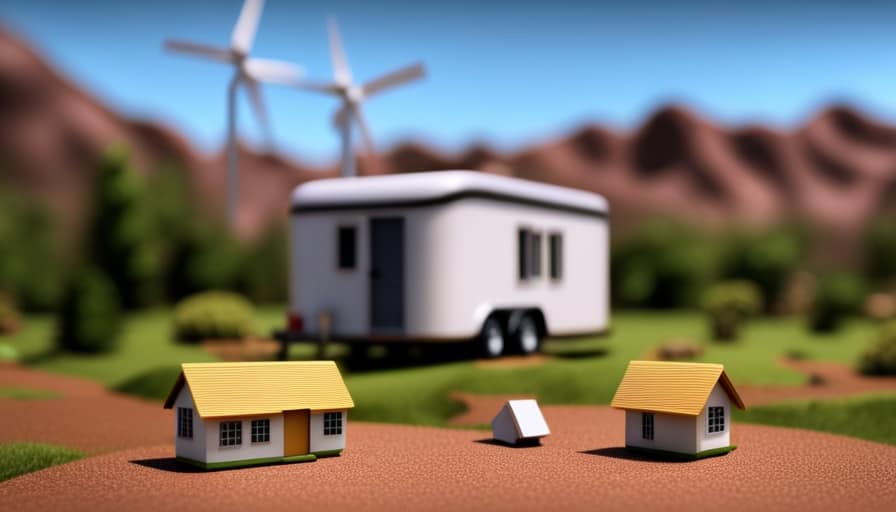
Crowdfunding platforms have become popular in recent years, offering investment opportunities to individuals who want to support innovative projects like tiny houses. By leveraging the power of community support, crowdfunding allows individuals to pool their resources and contribute towards the funding goal of a tiny house project.
This not only provides financial assistance but also creates a sense of ownership and involvement within the community. Crowdfunding campaigns can attract a wide range of backers, including those who are passionate about sustainable living, minimalism, or affordable housing solutions.
With the right marketing strategy and a compelling story, crowdfunding can be an effective way to raise the necessary funds for building a tiny house.
Creative Fundraising Strategies
We can explore innovative approaches to secure financing for a tiny house by considering creative fundraising strategies and alternative funding sources. When traditional financing options aren’t feasible, non-traditional financing methods can be explored.
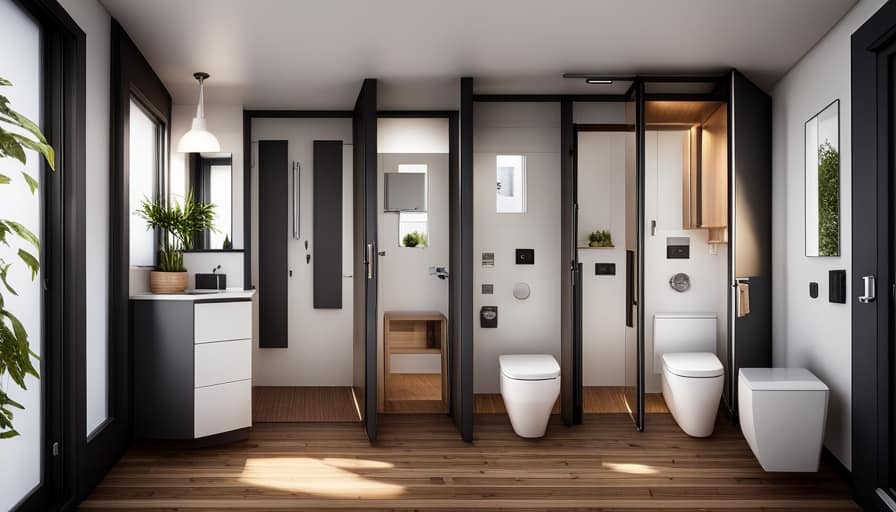
Here are four alternative funding sources to consider:
-
Community fundraisers: Organize local events such as garage sales, bake sales, or community dinners to raise funds. Engaging the community not only helps financially but also fosters a sense of support and belonging.
-
Grants and scholarships: Research and apply for grants or scholarships specifically designed for tiny house projects. Many organizations offer financial assistance for sustainable and affordable housing initiatives.
-
Crowdsourcing platforms: Utilize online crowdsourcing platforms to reach a wider audience and gather funds for your tiny house. Create compelling campaigns highlighting the benefits of tiny houses to attract donors.

-
Local partnerships: Collaborate with local businesses or organizations that align with your values and goals. Seek sponsorships or partnerships that can provide financial support or resources for your tiny house project.
Evaluating Insurance Options
We should carefully evaluate our insurance options when considering financing for a tiny house. Insurance coverage is essential to protect our investment and provide financial security in case of accidents or damages. When selecting insurance coverage for a tiny house, it is crucial to consider coverage limits that will adequately protect us in various scenarios. To illustrate this point, let’s take a look at the table below:
| Coverage Type | Coverage Limit |
|---|---|
| Property | $100,000 |
| Liability | $500,000 |
| Personal Property | $50,000 |
| Loss of Use | $10,000 |
These coverage limits ensure that we have sufficient protection for our tiny house and its contents. By carefully evaluating our insurance options and selecting coverage limits that meet our needs, we can have peace of mind knowing that we are adequately protected. Now, let’s move on to examining building and zoning regulations.
[Transition sentence: Now that we have evaluated our insurance options, it is important to examine the building and zoning regulations.]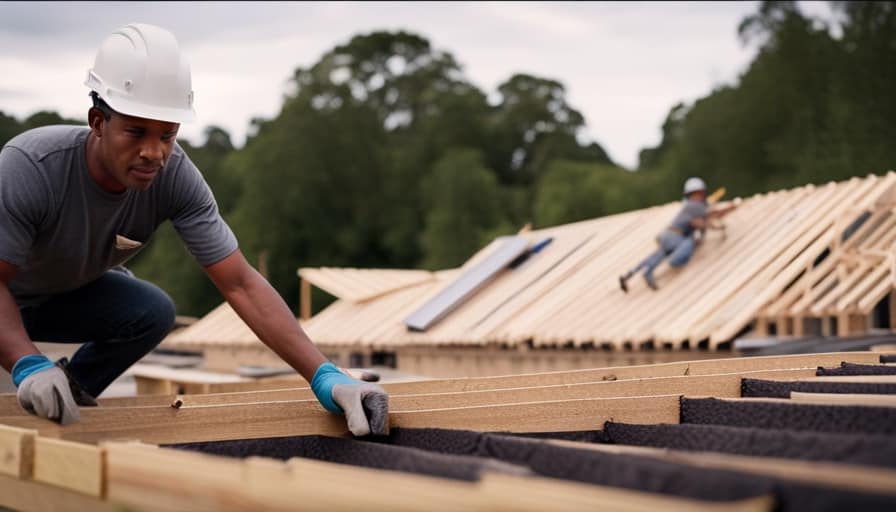
Examining Building and Zoning Regulations
Now that we’ve evaluated our insurance options, it’s crucial to understand and comply with the building and zoning regulations when considering financing for a tiny house. These regulations ensure that our tiny house is safe, legal, and in compliance with local laws. Here are some key aspects to consider:
-
Building Permits: Before starting construction on our tiny house, we need to obtain the necessary building permits from the local authorities. This ensures that our structure meets the required safety standards and building codes.
-
Zoning Restrictions: It’s important to check the zoning regulations in our area to determine if tiny houses are allowed, and if so, any specific restrictions or limitations that may apply.
-
Occupancy Restrictions: Some jurisdictions have occupancy restrictions that limit the number of people who can live in a tiny house. We need to be aware of these restrictions and ensure that our tiny house meets the occupancy requirements.
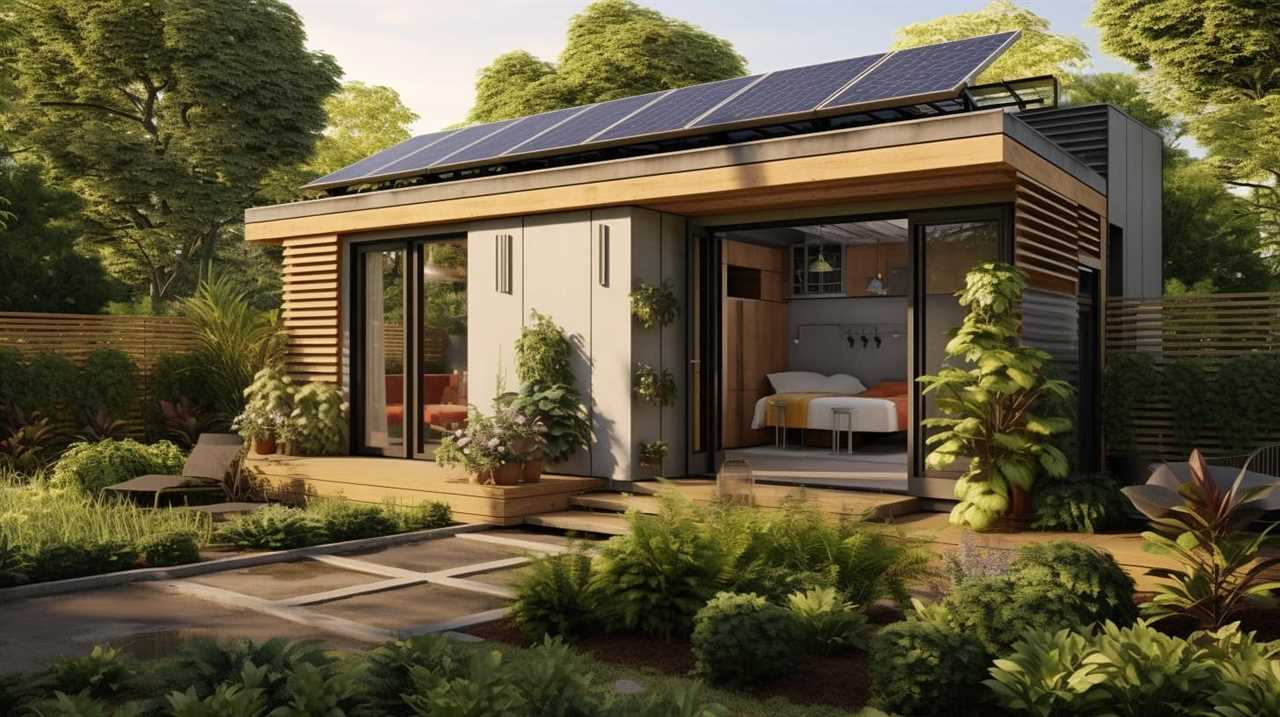
-
Compliance with Health and Safety Standards: Our tiny house should meet all health and safety standards, including proper ventilation, electrical wiring, plumbing, and fire safety measures.
Understanding and complying with these building and zoning regulations not only ensures our safety but also protects our investment. It’s important to be thorough and diligent in this process to avoid any legal issues or complications in the future.
In planning for future expenses, we need to consider the costs associated with maintaining and upgrading our tiny house.
Planning for Future Expenses
As tiny house owners, we should regularly budget for future expenses to ensure that we can maintain and upgrade our home as needed. One way to do this is by setting aside future savings specifically for these purposes.

It’s important to anticipate potential costs such as repairs, renovations, and replacements, and allocate funds accordingly. By planning ahead, we can avoid financial strain and ensure that our tiny house remains in good condition.
Additionally, it’s crucial to establish emergency funds for unexpected situations. This can provide a safety net in case of unforeseen events like natural disasters or medical emergencies.
Frequently Asked Questions
How Much Does It Cost to Build a Tiny House?
Building a tiny house involves various cost factors and budget considerations. It’s important to consider materials, labor, permits, and any additional features. We’ll provide a thorough, detailed analysis of the cost to build a tiny house.
Are There Any Specific Requirements or Restrictions for Building a Tiny House in Certain Areas?
Zoning regulations and building codes vary by area, so it’s important to research specific requirements and restrictions before building a tiny house. Adhering to these guidelines will ensure a smooth and legal construction process.

What Are the Advantages and Disadvantages of Financing a Tiny House Versus Paying Cash?
When considering financing a tiny house, it’s important to weigh the advantages and disadvantages. Financing allows for lower upfront costs and the ability to build credit, but can also result in higher overall costs due to interest payments.
Can I Use a Personal Loan to Finance a Tiny House?
Yes, we can use personal loans to finance a tiny house. However, it’s important to consider alternative financing methods as well. We should thoroughly analyze the advantages and disadvantages of each option before making a decision.
Are There Any Tax Benefits or Incentives Available for Financing a Tiny House?
There are potential tax deductions and government grants available for financing a tiny house. It is important to thoroughly research and analyze these options to determine if they can serve our needs.
Conclusion
In conclusion, when it comes to financing a tiny house, it’s crucial to carefully consider various aspects. From understanding your budget to exploring loan options and researching financing programs, thorough planning is essential.
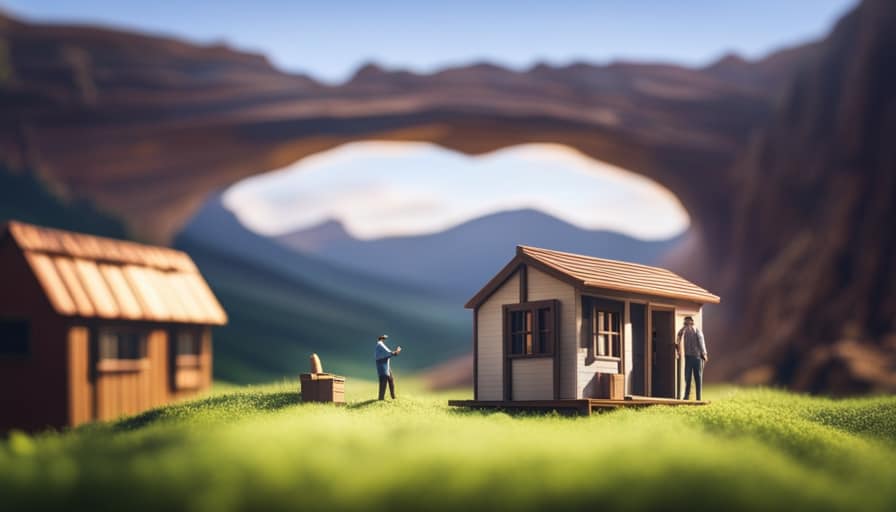
Additionally, evaluating insurance options and examining building and zoning regulations are crucial steps to ensure a smooth process.
Lastly, it’s important to plan for future expenses. Remember, in the world of tiny house financing, knowledge is power!
I’m Theodore, and I love tiny houses. In fact, I’m the author of Tiny House 43, a book about tiny houses that are also tree houses. I think they’re magical places where imaginations can run wild and adventures are just waiting to happen.
While tree houses are often associated with childhood, they can be the perfect adult retreat. They offer a cozy space to relax and unwind, surrounded by nature. And since they’re typically built on stilts or raised platforms, they offer stunning views that traditional homes simply can’t match.
If you’re looking for a unique and romantic getaway, a tree house tiny house might just be the perfect option.










